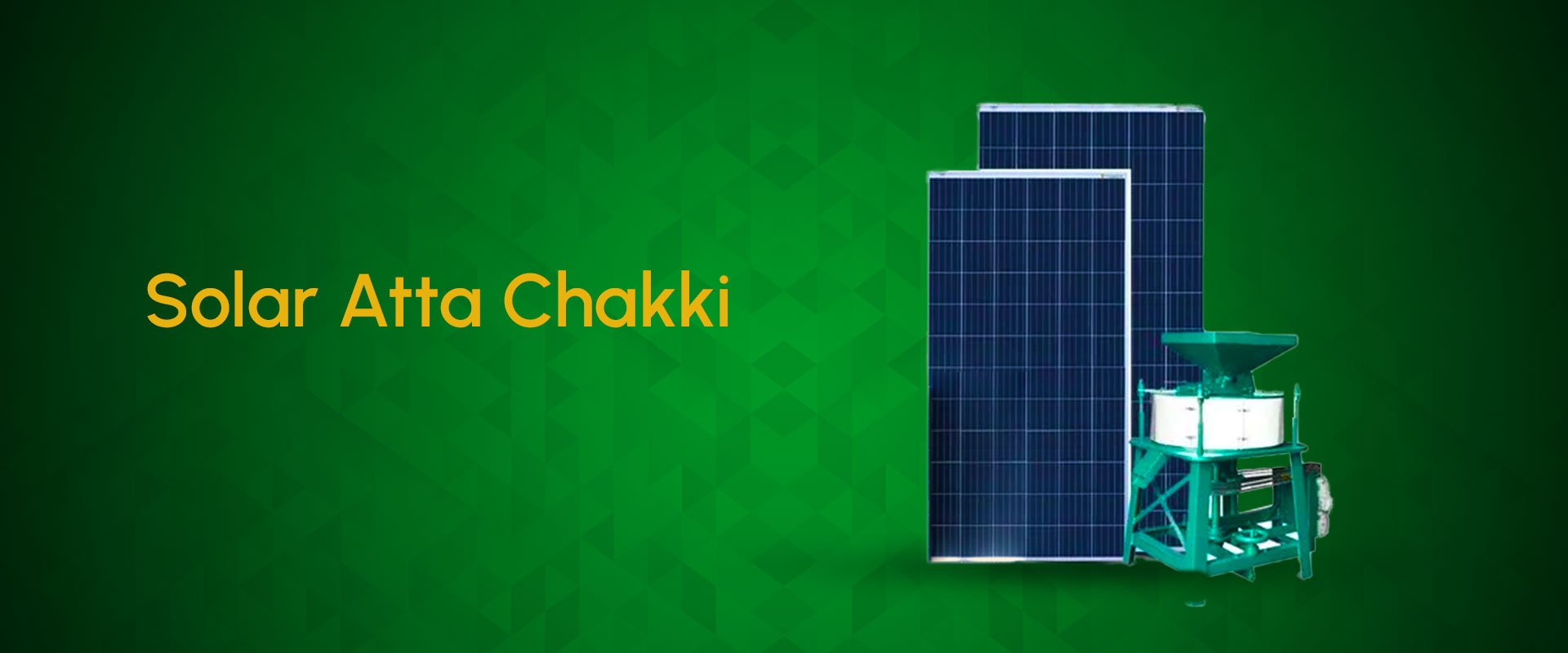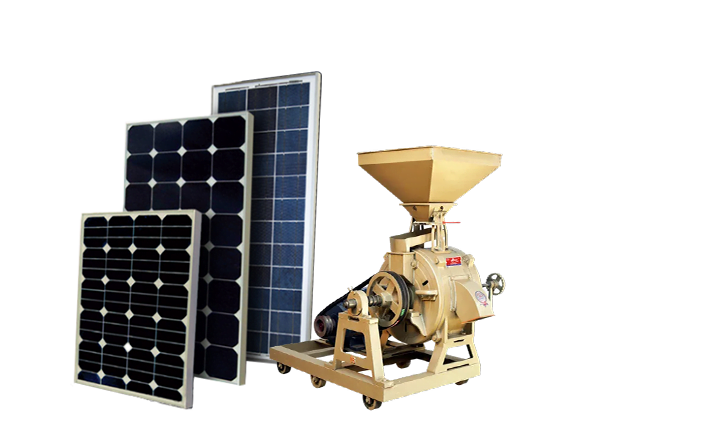
Solar Atta Chakki
A solar atta chakki is a flour mill that runs on electricity generated by the Sun. The six basic components of a flour mill powered by solar energy are:
1) Flour Mill.
2) Motor.
3) Solar panel.
4) Solar drive or VFD drive.
5) Solar panel stand.
6) Wiring.


Flour Mill
The flour mill is the plant’s primary component. You should set up a mill with a minimum diameter of 20 inches so that you can produce 10 to 15 quintals of flour each day. You will get daily profits of between 2000 and 2500 rupees from it.
The Solar Drive or VFD Drive
The fourth item is the solar VFD drive, commonly known as the solar drive. The function of the solar drive is to transform the DC energy produced by your solar panel into AC energy that can power the motor. When purchasing this drive, keep in mind to get one of high quality, like ours, and to install a solar drive that is larger than the horsepower of the motor you have already installed.


The Motor
The motor is the second component of a flour mill powered by solar energy. A 10 horsepower motor can be installed to operate a 20- to 24-inch flour mill. Always use a reliable company motor like ours while making your selection. On the solar panel, the motor with minimal jerk load performs excellently.
Solar Atta Chakki Panel
The solar atta chakki panel is the component of the solar flour mill that costs the most money. You generate electricity with the solar panel to power your grain mill. Solar panels come in a variety of designs, namely polycrystalline, monocrystalline, mono-perc, and bi-facial. When picking solar panel technology, one should keep in mind that the solar panel should provide you with the most power possible throughout the entire year. In order to avoid running into any difficulties, a mono perk solar panel is a better and more affordable solution that requires little maintenance and also generates electricity.


Solar Panel Stand
The solar panel mounting framework, or solar panel stand, is listed at position five. The solar panel stand is a crucial component of the solar power plant that substantially affects how much power it produces. If the solar panel stand is not installed in the correct orientation and to the right degree, your solar power plant won’t produce its full potential, causing you to lose money unfairly. The solar panel should always be positioned with its face toward the south and put at the proper angle so that your plant may produce more power with fewer panels.
Wiring
The wiring of a solar atta chaki, or flour mill, involves connecting the various components of the solar power system to ensure efficient operation. This typically includes wiring the solar panels to the charge controller, which regulates the flow of electricity from the panels to the batteries. The inverter then converts the DC power from the batteries into AC power, which is compatible with the atta chaki’s electrical system.

